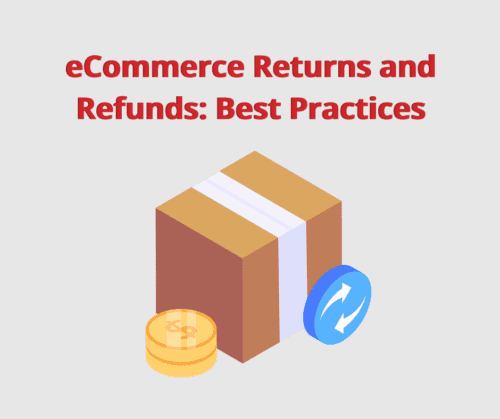Imagine this – Mary is working late at night when she suddenly remembers that she has not purchased the holiday gifts for her family and friends yet. She hurriedly goes to an online site and adds the gifts to the cart. To her dismay, she finds out that although the gifts are available, they will not be delivered to her before the family get-together. However, they have an option to pick up the next day from the nearby curbside. Mary immediately orders the gifts and picks them from the curbside the next day. She is relieved because she doesn’t have to go empty-handed or undergo the holiday shopping stress.
What you read is an example of connected retail.
Connected retail integrates offline and online channels to create a connected experience for the customers. So, like Mary, a customer can purchase a product online and pick it up from a physical location or they could be in a shop and compare prices online before purchasing. No two customer journeys are alike, and as a retailer, you and your 3PL should be prepared for all kinds of connected purchases.
Why is there a need for a connected customer journey?
We know that connected retail will benefit the customers as they can shop from anywhere, anytime as per their convenience. But here’s why it’s important for you to build connected customer journeys.
1. Understand the customer behavior across multiple channels
Customers expect a good experience across all channels. According to a PwC study, 59% of customers in the US said that they would walk away from a brand after bad experiences even if they love the brand or their product. Hence, you must understand your customers deeply to provide them with a seamless and consistent experience across all channels. The good part about the connected experience is that you can collect enormous data about the customer from all touchpoints. This will help you get an in-depth understanding of the customer’s behavior online and offline, the events that trigger purchase, etc. This data will help you to understand your customer better and send the right offers at the right time to drive conversions.
2. Increase micro-conversions
Do you know 92% of customers who visit a retailer’s website don’t come for purchasing? Most of them come to search for a product or compare the prices. So, don’t expect conversions to happen suddenly. Like tiny habits, engagement and long-lasting relationships with your customer can be built through micro-conversions. Micro-conversions are those tiny ‘aha’ moments that gently nudge the customer to purchase. These micro-conversions could be requesting follows on social media, signing up for the newsletter, adding a product that’s out of stock to the wishlist, etc. A connected customer journey can help you to drive those micro-conversions and increase activity on your app or website, which will eventually lead to macro-conversions.
3. Reduce drop-offs
According to research, $4.6 trillion worth of merchandise is abandoned in online shopping carts. There could be many reasons – complicated checkout process, too many steps involved in purchasing, the desired payment option is unavailable, or it could be something as simple as the customer must have added to the cart and forgotten about it. Sometimes the drop-off could also happen because you failed to convert them at the right moment. For example, the customer may have visited your store to buy a product but with no one to guide them or address their queries, they leave the store without purchasing it. These moments happen in the consideration stage where the customer is considering purchasing a product. If you had capitalized on the moment, you would have got a new sale. Connected customer journeys will highlight the critical user moments where the probability of a purchase is high and enable you to guide the customer to make a purchase.
4. Boost customer lifetime value (LTV)
Companies have almost perfected the art of converting prospects into a sale, but over 77% of them confirmed that they are less confident about reducing churn or predicting customer LTV. There are several ways to boost the LTV. You can build loyalty rewards, design referral programs, encourage repeat purchases and give special discounts or cashback on those purchases, and send personalized recommendations, reminders, or flash sales messages to delight and engage with them. To build a successful customer retention strategy, you need to leverage data to understand how the customer shops and target them with contextually relevant messages. Connected retail will provide that data and also enable you to bring flexibility to the programs. For example, the customer should be able to redeem their loyalty reward points on your app or at your store too. You can also add value-adds such as awarding more points on a new purchase or offering payment and checkout flexibility to boost engagement. Stitch Fix, a personal styling service in the US, focuses largely on customer retention. They created LTV magic that allows customers to sign-up for ‘Direct Buy’. This means that the customer could directly buy a single item without buying the usual ‘Fix’ box. It was an instant hit and helped them to retain 40% of their customers in 12 months.
5. Personalize the communication
Who doesn’t like a reminder to redeem that month-end coupon or replenish coffee powder as it’s about to get over? Customers prefer to receive personalized messages from brands across all touchpoints. According to Think With Google’s study, people spend 40% more than what they had planned when the shopping experience is highly personalized. As mentioned earlier, a connected experience provides you a 360-degree view of your customer on a unified platform. It will give you real-time and historical data about your customer’s shopping behavior, which you can use to personalize your communication and recommendations.
Take Sainsbury’s, UK’s second-largest supermarket’s example. To create a personalized experience, they used a three-point approach of segment -> target -> engage. They first used consolidated customer data across different channels to segment their customers based on geography. In the next step, they created targeted product tiers based on pricing and lastly used a dynamic engagement approach to send personalized messages to customers.
How to build connected customer journeys
There cannot be a one-size-fits-all strategy for building connected customer journeys. It depends upon where you lie in the preparedness journey. Assess how prepared you are and create a blueprint to move to the next level. We have divided the connected customer journeys into three stages – Crawl, Walk, and Run. You can build your strategy accordingly.
1. The Crawl stage: It’s the most basic stage where you just start by building the foundation of connected customer journeys. In this stage, the channels are disjointed. So, focus on understanding your customer and the typical events such as website visits, adding products to cart, adding to wishlist, etc. to send a message that drives action. Don’t bother about personalization; focus on initiating communication with your customer.
2. The Walk stage: In the Walk stage, the focus would be on connecting the channels to create a connected experience. You can begin by creating separate clusters of messages to acquire, engage, and retain customers across different channels and to nudge them to take action. In case, the customer does not engage the way you planned, find alternatives to retain them in the customer journey. Going back to Sainsbury’s example again, the supermarket giant was focused on segmenting, targeting, and engaging the customers. It was a straightforward strategy, but they managed to send personalized messages to the right cluster at the right time.
3. The Run stage: This is the final stage where your focus must be on hyper-personalizing the customer’s experience across all channels and building a long-term relationship with them. Leverage the data you have gathered from all channels to personalize the campaigns. You could consider introducing loyalty programs and special promotional discounts at this stage considering that the customer knows your brand well and would more likely engage with your brand for a long time. Let’s look at Apparel Group, one of the largest retail conglomerates in the Middle East and Asia. They had registered significant growth in sales during one of their Black Friday season sales but wanted to understand the shift in consumer journey, likes, and preferences to personalize the communication at every touchpoint. They sent messages across different touchpoints such as email, SMS, Facebook ads, push notifications based upon the customer’s lifecycle stage, preferences, and behavior. These efforts led to 4x growth in the overall business.
Conclusion
Consumer behavior has changed a lot in the last 18 months. According to Google’s recent guide for retailers on how to be there for customers in 2021, retail searches grew by 3x in Q4 2020 as compared to the previous year. Simultaneously, the ‘near me’ searches grew by 100% in the last year. Given the intense competition in the retail space and keeping the upcoming holiday season in mind, it’s time that you seriously begin creating a connected customer journey. To create the perfect connected customer journey, you can use various engagement workflows at different stages of the customer journey to send the right message to the right customer at the right time.
To know how to create connected customer journeys using workflows, check out our ebook on Retail Strategies and Omnichannel Engagement Frameworks, where we have covered different journeys backed with examples to help you get started.
Author details:

Pulkit Jain
Sr. Content Marketing Manager, MoEngage
Pulkit drives growth through content at MoEngage. His experience as a B2B marketer comes fueled with a passion for user-centricity, affinity for data, and a love for technology, movies, comics, and gaming.






